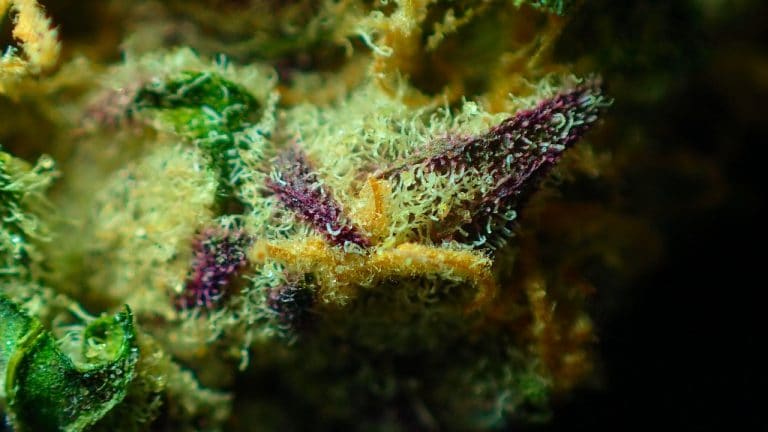What Is Marinol and How It Relates to Medical Marijuana Use

What is Marinol, and how does it work? To find out the answer, we will have to dive deep into the drug’s composition and restate the evidence for its therapeutic use.
Furthermore, we will delineate the THC dilemma that synthetic cannabinoids carry and evaluate the drug’s long-term effectiveness.
We will also compare the effects of this drug with other marijuana-derived products, such as CBD oil, and emphasize the therapeutic differences.
Hopefully, by the end of this article, you will know whether it is applicable or harmful in your particular situation.
So, let’s dive right in!
What Is Marinol?
Marinol is a prescription-only drug used to treat digestive problems associated with immunodeficiencies and cancer therapy. It is an FDA-approved Schedule III drug.
Its primary active substance is dronabinol — a synthetic cannabinoid. In other words, Marinol is not a cannabis-derived drug, but it could be considered cannabis-like.
Marinol is sold in capsules that are used to treat the side effects of chemotherapy, like nausea and vomiting.
Does Marinol Contain THC?
Yes, it does. Marinol capsules contain THC. Therefore it’s vital not to mix it with other substances.
First of all, don’t mix Marinol with alcohol because it could lead to adverse side effects. Secondly, to avoid severe interactions, don’t mix it with other drugs, like Xanax, Valium, Seconal, Nembutal, and Librium,
And lastly, if you’re a regular marijuana smoker, you should not take Marinol at the same time. This mixture could lead to an overdose. Smoking CBD pre-rolls is also disputable, hence consult with your doctor about it.
Does Marinol Get You High?
Yes, it does. Since Marinol and THC have similar molecular structures, you could end up feeling “high,” confused, anxious, sleepy, dizzy, etc.
In fact, the only difference between the molecular structures of THC and Marinol is that Marinol contains more elements, and some of its elements are in different positions.
Keep in mind that Marinol’s synthetic THC will be absorbed by your body almost the same way as natural marijuana’s THC.
It takes 30 minutes to 2 hours for Marinol to start working, and its effects on your mental state can last 4 to 6 hours.
Is Marinol Legal?
Yes, Marinol is fully legal, hence a huge argument in the marijuana legalization battle.
In 1985 FDA approved Marinol for medical uses, which means that it’s legal in all 50 states. However, since Marinol is a regulated pharmaceutical drug, you need to have a prescription if you want to buy it.
Given that dronabinol expresses psychoactive THC effects, since its introduction in 1985, Marinol has been rescheduled two times within the official Drug Enforcement Schedule.
Is Marinol a controlled substance? Yes, it is. Officials first marked Marinol as a Schedule II substance, declaring it highly addictive, adverse reaction-imposing, and with low medical potential.
The following year, due to the recorded effectiveness, the DEA relocated Marinol to Schedule III, which provided a significant boost to prescription rates during that period.
After a while, the accumulated evidence regarding the drug’s effectiveness fueled the initiative for yet another rescheduling.
What is Marinol today? Despite having similar effects to THC, Marinol is now considered a Schedule III substance As such, it has high medical and low abuse potential.
It’s worth pointing out that, officially, marijuana is still considered a Schedule I substance.
What is Marinol Made Of?
As mentioned before, dronabinol, which looks like a light yellow resinous oil, is Marinol’s active ingredient. Dronabinol is incapable of being dissolved in water. It’s also formulated in sesame oil. Each Marinol capsule can contain 2.5mg, 5mg, or 10mg dronabinol.
On that note, Marinol gelatine capsules contain additional substances that add to the drug’s pharmacological potency.
Inactive Marinol Ingredients
These are glycerin, titanium dioxide, and iron compounds, all supporting its chemical stability. The primary solvent used in this drug is sesame oil.
To be more precise, Marinol capsules are not just THC pills. They contain additional pharmacologically inactive ingredients to aid its physiological efficacy.
Seeing how it is, in fact, a drug, it is clinically tested for effectiveness and FDA-approved for quality and safety.
What Is Marinol Prescribed For?
The inspiration for dronabinol came from clinical experience, which repeatedly recorded the benefits of marijuana for nausea. Thus, Marinol was initially introduced and registered as anti-nausea medicine or an antiemetic.
However, due to its psychoactive effects, this drug is treated somewhat differently than other prescription nausea medicine and is reserved for only the worst of cases.
So, what is Marinol used for? Today, Marinol is clinically approved and officially prescribed for the treatment of:
- Loss of appetite (anorexia) in people with Acquired Immune Deficiency Syndrome (AIDS) who have lost weight. This appetite suppression is also called cachexia or Wasting Syndrome.
- Nausea and vomiting caused by anti-cancer medicine (chemotherapy) in people with a low response rate to conventional medication for nausea.
What Is Marinol Used For, Additionally?
Off-label uses of Marinol are not officially recognized but are clinically supported and show some therapeutic promise. Given its THC-mimicking effects, this drug has the potential to treat glaucoma and even obstructive sleep apnea.
Additionally, new evidence underlines the benefits of Marinol for pain that is not associated with cancer and painful flare-ups in fibromyalgia.
The use of Marinol for pain proved to be mildly effective in managing chronic pain and muscle spasms associated with multiple sclerosis.
Some studies which tried to figure out what is Marinol also confirm that it could be used successfully for pain relief and as a behavioral aid in patients with Alzheimer’s disease.
Compared to Marinol, marijuana studies show greater potential in the treatment of pain-related conditions.
On the other hand, a limited pain study found the data on Marinol to be inconclusive when it comes to treating neuropathic pain following an injury.
What Are Marinol Pills and How to Use Them?
Marinol pills are an FDA approved, THC-based drug that has proven efficient in treating nausea and vomiting in cancer patients, and loss of appetite in AIDS patients.
There are three available doses of Marinol THC pills, i.e Marinol capsules: 2.5mg, 5mg, and 10mg. Each dosage is administered according to the severity of the symptoms and the overall physiological state of the patient.
It takes 30 minutes for the drug to express its effects which can last up to 6 hours. If we’re talking appetite boost, that can last up to 24h.
When it comes to storing the capsules, they need to be kept in a cool environment (46°–59°F).
Treatment of AIDS-Related Anorexia
For adults, the initial starting dose is 2.5mg, taken twice a day. If it’s well-tolerated, the dose can be increased to two doses of 5mg. The maximum dose of Marinol is 10mg, taken twice daily.
To avoid any unwanted side effects of Marinol on the elderly, the initial starting doses should be introduced only in the evening.
Treatment of Chemotherapy-Related Nausea
In cancer patients, Marinol THC pills are administered 1–3 hours before the treatment, and if necessary, once again every four hours after the procedure. The initial dose is 5mg, and it can be repeated up to 4–6 times per day if needed.
In addition to that, the first dose is used at least 30 minutes before the first meal, whereas subsequent treatments do not depend on food intake.
Marinol vs Marijuana: the Therapeutic Outlook
Although inherently similar, medical marijuana and cannabis-based drugs tend to act differently.
Besides THC, cannabis contains various chemicals, such as cannabidiol (CBD), terpenes, flavonoids, and essential oils. When consumed and absorbed together, they synergize with one another, revealing their full therapeutic potential.
Given that weed is still illegal in the US (on a federal level), there is no way of obtaining marijuana prescriptions. You can, however, get a cannabis recommendation from a licensed physician who works in a country/state that legalized cannabis.
Medical cannabis is usually consumed by smoking or in the form of pills (supplements).
Unlike marijuana-based THC pills, Marinol is a registered drug. Meaning, every licensed doctor can prescribe it.
Pros of Marijuana
No matter how controversial it might seem, medical marijuana can offer certain benefits compared to Marinol, so in a Marinol vs marijuana battle, the first one is the winner.
The advantages of medical marijuana include:
- Better dosing control. Initial doses of Marinol can be too potent for some people, and medical cannabis has more comfortable dose-adjusting properties.
- Broader spectrum of effects. Cannabis contains other beneficial chemicals, such as CBD, that contribute to its overall effects.
- Better tolerability. The side effects of marijuana can be diminished by choosing the right cannabis strain.
What is Marinol intended for, then? Well, it’s primarily used for the official medical indications and nothing more. On the other hand, marijuana can help treat:
- Alzheimer’s disease
- Chronic pain
- Appetite loss and nausea
- Cancer
- Crohn’s disease
- Epilepsy
- Multiple sclerosis
- Muscle spasms
Nevertheless, these cannabis uses are predominantly empirical and are not supported by substantial quantified data, which is the case with Marinol.
Effectiveness
In terms of effectiveness, marijuana pills have approximately the same onset time as Marinol capsules.
According to the official evidence, only 10%–20% of dronabinol is systemically effective due to the metabolic effects of the liver. However, when inhaled as weed, the effects of THC are expressed more quickly.
Marinol vs THC
THC is naturally found in cannabis plants, and dronabinol (Marinol’s active ingredient) is artificially created based on its structure.
Given that it resembles its chemical constitution, dronabinol acts on both CB1 and CB2 receptors of the endocannabinoid system. Its physiological and psychotropic effects are fully engaged without the natural support of other cannabis-based chemicals.
What is Dronabinol?
Dronabinol is a synthetic compound created to mimic the structure and clinical effectiveness of delta-9-tetrahydrocannabinol (THC) — a cannabinoid compound found in cannabis plants.
It acts via the endocannabinoid system, and as such, it affects various parts of the immune and nervous systems. With Dronabinol/Marinol, THC effects are pure and are more accurately delivered.
Marinol Drug Testing
Just like marijuana and any other drug, the traces of Marinol will remain in your system. For how long? It will depend on your age, metabolism, body mass, physical activity, hydration level, and health conditions. Interestingly, the answer also depends on which drug test you are taking.
Although there are many ways to pass the notorious drug test, you should tell your employer if you’re taking Marinol before taking the test to avoid any confusion.
Marinol vs CBD Oil
Both THC and CBD are the principal cannabinoids of the marijuana plant. In recent years, CBD has gained academic attention due to its newly found therapeutic potential.
CBD is proven to be useful for:
- Chronic pain
- Cancer problems
- Anxiety disorders
- Irritable bowel syndrome
- Epilepsy
- Heart problems
- Insulin resistance
- Neuroprotection
There are numerous CBD products on the market today. They all vary in terms of the extraction method used, quality control, and the pharmacological type of the product in question.
The main advantage of CBD is that it doesn’t provide neurological side effects consistent with THC.
Marinol Side Effects
Since it delivers an exact amount of dronabinol with every dose, side effects are more likely to appear in the long-term, as opposed to dose-adjustable medical marijuana products.
An interesting fact is that cannabis traits that describe the “marijuana high” are declared as side effects of dronabinol.
The most common side effects include:
- Fatigue
- Dizziness
- Out-of-body experience
- Confusion
- Anxiety
- Cognitive decline
- Hallucinations
- Stomach pain (accompanied by nausea)
- Seizures
- Elevated heartbeat
- Irritability and restlessness
Compared to weed, Marinol is officially recognized as having a low dependency profile, and as such, is not regarded a heavily addictive substance.
Marinol Side Effects in the Elderly
The elderly usually have several conditions, such as cardiovascular and neurological diseases, so they tend to use more medications. As a result, they are more susceptible to adverse THC effects.
Most commonly, they develop neurological symptoms, such as dizziness, confusion, and irritability. Additionally, Marinol side effects may include significantly lower blood pressure and interfering with blood pressure medication.
This can cause loss of balance, falls, and fractures, as well as an occasional arrhythmia episode.
These patients are to be monitored closely and, according to recommendations, the best way to treat them is to administer their doses in the evening, thus avoiding most of the unwanted side effects.
What Is Marinol to You?
The topic of Marinol is yet another “natural vs. man-made” medicine discussion, with appealing arguments on both sides.
Although Marinol sounds a lot like “marijuana,” it is not to be confused with the herb, neither chemically nor pharmacologically.
Also, despite its main component resembling THC, it has a state-of-the-art substance delivery mechanism that provides your body with calculated doses of cannabinoid stimulation. Officially it’s prescribed only for nausea and appetite suppression in patients with AIDS or cancer.
Recreationally, what is Marinol suitable for? Well, it’s nothing like weed. It’s extremely potent and could slam-dunk you with a single dose. It’s prescription-only and pricey, too.
All things considered, Marinol is a drug, and like any other drug, it should be used with caution.
FAQs
Is Marinol the same as CBD?
There is a big difference between Marinol and CBD. For example, Marinol contains THC, while CBD oil can be THC-free. This basically means that CBD won’t get you high since it doesn’t have a psychoactive effect.
Furthermore, CBD oil is legal on the federal level. Anyone can obtain it if it’s hemp-derived and contains less than 0.3% THC. On the other hand, you need to have a prescription to buy Marinol.
Does Marinol have THC or CBD?
Marinol does not contain CBD at all. Marinol contains synthetic THC, called dronabinol. It is a complete structural twin of the THC molecule.
These two differ only in the optical properties of the compound, which doesn’t impact the pharmacological properties whatsoever. When it comes to drug tests, they will show positive for THC when Marinol is taken but show no signs of CBD, not even in trace amounts.
What is the active ingredient in Marinol?
The main active ingredient in Marinol is dronabinol, a synthetic version of THC.
It acts on the very same receptors as THC and expresses both physiological and psychoactive properties. Therefore, it is considered a controlled substance, and it can be obtained only through a prescription.
Marinol’s inactive ingredients are glycerin, titanium dioxide, and iron compounds, while its primary solvent is sesame oil.
Does Marinol show up on a drug test?
In short, yes. The main active compound in Marinol has the same basic structure as THC, and as such, it shows up both on the laboratory tox screens and on routine drug tests.
For example, it stays in your urine for two days to 5 weeks. Therefore, if you’re using Marinol, be sure to notify the person that’s doing your drug test to avoid any troubles with your employer.
Does Marinol help with pain?
There are studies that confirm the benefits of Marinol for neuropathic pain associated with multiple sclerosis and other degenerative diseases. You will also find data that Marinol could be used as a behavioral aid in patients with Alzheimer’s.
However, the data on its wider analgesic uses is still inconclusive. Off-label uses of Marinol include treating pain usually associated with fibromyalgia and diabetic polyneuropathy.
How much does Marinol cost?
The price of the drug depends on its potency and on the pharmacy you visit. For example, a pack of 60 capsules with 2.5mg and 5mg doses costs approximately $734.47 and $1,518.39, respectively.
Compared to medical marijuana, Marinol is significantly more expensive. For instance, a gram of buds costs between $5 and $20. An ounce of buds costs $200–$400, while products with higher levels of THC cost about $20–$60 per gram.
What states is Marinol legal in?
Marinol is legal in all 50 states since it’s FDA-approved for the treatment of chemotherapy-induced nausea and AIDS-related wasting syndrome. Pharmacies stock up on Marinol regularly and dispense the drug to patients with prescriptions.
However, this wasn’t always the case. Since 1985, Marinol has been rescheduled twice. First, it was marked as a Schedule I substance, only to be relocated to a Schedule II substance in the following year. So, what is Marinol today? Marinol is officially a Schedule III substance.






I have been prescribed Marinol for appetite loss and nausea. The prescription says to take in the evening or bedtime. That seems counter intuitive since I don’t need my appetite increased while sleeping. I also use marijuana edibles for sleeping. Am concerned about both at same time of day, because can’t sleep without the edibles!
Dear Charlene,
Marinol (dronabinol) is usually prescribed to be taken an hour before a meal, which in your case is probably dinner. Now, considering that you also take another THC-type product at the proximal time, there is a possibility of additive effects on the central nervous system.
These additive effects would depend on the proximity of times you take both substances and their cumulative potency.
To mitigate these, it is advisable that you stick only to one product, which in this case would be the prescribed drug.
For a more clear assessment of how to adjust your dosage, please refer to your attending physician for a dosage assessment.